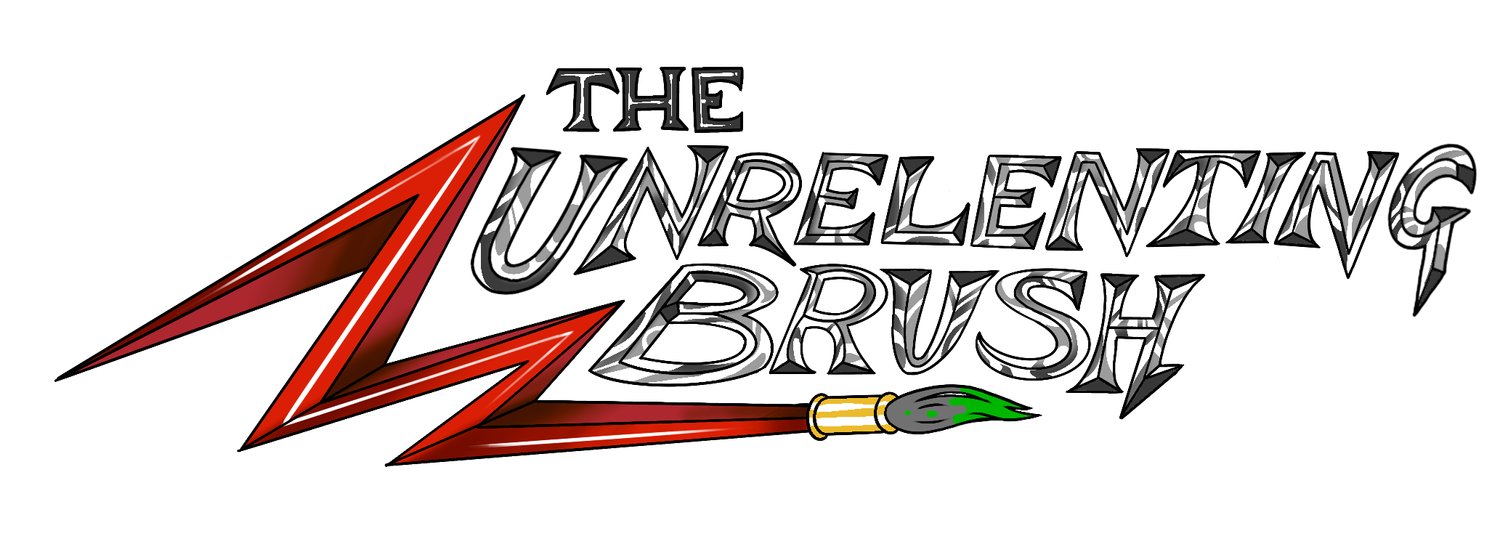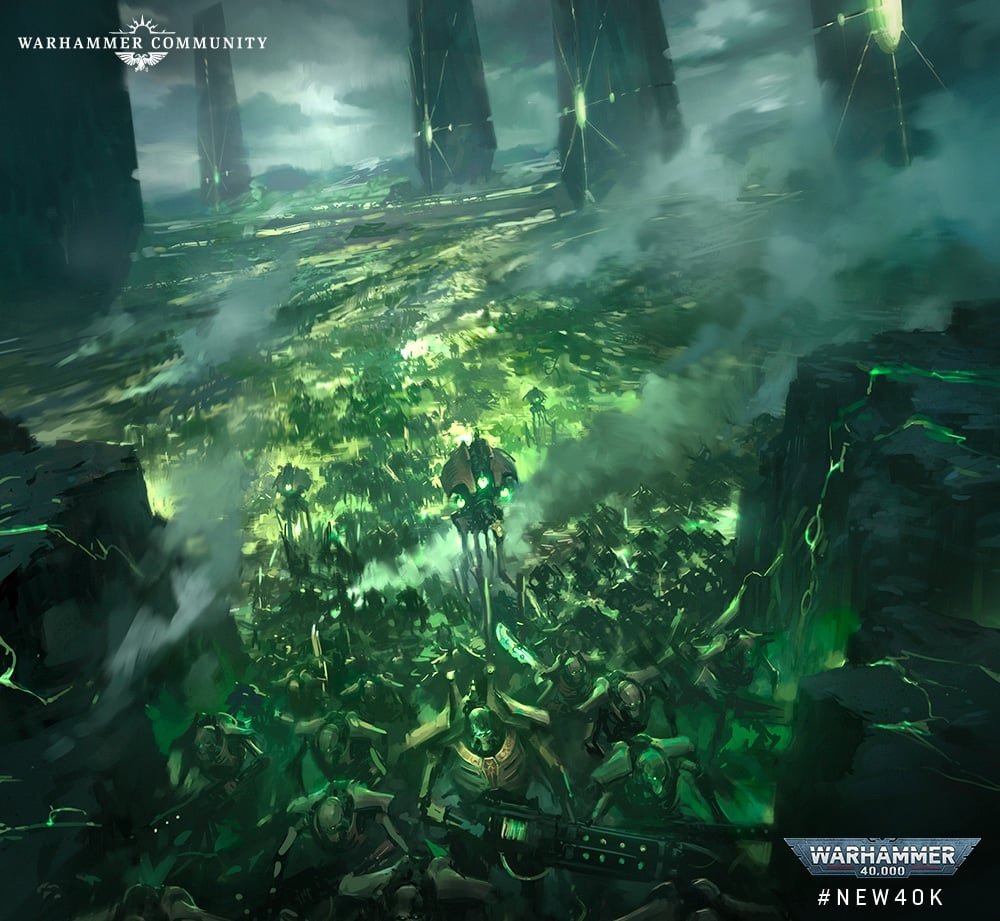Codex: Necrons Review - Reanimated Once Again
Is the ground rumbling at your feet? Maybe you can spy an eerie green glow emanating from nearby foundational cracks? Well, that can only mean one thing - the Necrons once again awaken from their millennia-long slumber to charge into Warhammer 40,000 10th edition via their new codex! With the introduction of their own unique Detachments, Enhancements and Crusade rules, let’s take a gander into the ancient caskets and blow the dust off of some ancient galactic terrors.
Rise Again
The Index: Necrons can now be laid to rest with the full Codex: Necrons approaching release. As Games Workshop provided us with a copy of the codex early for preview purposes, we’ll do what we can to showcase the most interesting changes and what this could mean for the faction on the tabletop.
Let’s kick-off with the most prevalent rule throughout the Necron unit list - Reanimation Protocols. The rule itself appears to be identical between the old index and the new codex, which isn’t strictly a huge shock. The rule is sound, easy to understanding and feels far more beneficial than the iteration previous. Some rules in how certain units use Reanimation Protocols have been tweaked slightly, but we’ll get into that a little later.
Detachments
Next up - Detachment rules. Within the index, the only rule was “Command Protocols” allowing any unit containing a Leader to get +1 to their Hit roll as part of the “Awakened Dynasty” Detachment. These still remain within the new codex along with most of the existing Enhancements, although some are renamed. The main Enhancement change is that the Hypermaterial Ablator is now called Nether-realm Casket and whilst it grants the unit Stealth, they no longer receive the Benefit of Cover against ranged attacks.
We’ll move over to the new Detachments, which I’m sure you’re far more interested in! They come in the following flavours:
Annihilation Legion - This is your close combat, fighty-stabby Destroyer and Flayed Ones Detachment.
Destroyer Cults and Flayed Ones are able to re-roll all charges and add 1 to their charge rolls when charging an enemy unit Below Half-strength.
The Enhancements allow feats such as:
Models fighting upon death on a 4+
Improving AP by 1 when rolling Critical Hits
Destroyer Cults denying enemies the ability to fall back from them on a 3+
Destroyer Cults triggering Battle-shock tests for enemies within Engagement Range at the start of the Fight phase
There are fun Stratagems in here too where you can trigger Reanimation for your Destroyer Cults or Flayed Ones units if they destroyed an enemy unit in the Fight phase or got them to Below Half-strenth in the Fight Phase, along with one that increases consolidation distance from 3” to 6” which could be huge for your Skorpekhs!
Canoptek Court - Unsurprisingly, this is all about Canopteks and the Crypteks that support them, which has a fun rule encouraging board possession.
Power Matrix is the Detachment rule here and it’s a little wordy. Areas of the battlefield become a “Power Matrix”. Your Canoptek and Cryptek units can re-roll Hit rolls of 1, but whilst within Power Matrix areas they can re-roll all Hit rolls. Your Deployment Zone is always a Power Matrix, whilst No Man’s Land and the Enemy Deployment Zone can become so if you hold at least half of the Objectives within those areas.
For Enhancements:
A Cryptek can attain the Infiltrator ability
A Cryptek’s unit wholly within a Power Matrix can also re-roll Wound rolls of a 1
A Cryptek can net you 1CP if you roll a 2+ whenever your opponent gains a CP due to the use of an ability
For a Cryptek’s unit, if an enemy charges it then on a roll of a D6 the enemy unit suffers D3 Mortal Wounds on a 2 - 5, or suffers 3 Mortal Wounds on a 6
Stratagems of note include being able to give your Cryptek or Canoptek units Devastating Wounds whilst within a Power Matrix, or immediately activating Reanimation Protocols on a Canoptek unit that is the target of a Charge, providing they’re within a Power Matrix.
Obeisance Phalanx - This is for your big bosses within the dynasties, including Overlords, Triarchs and their Lychguard.
Worthy Foes as a Detachment rule has you select an enemy unit in your Command Phase. Any Overlord, Triarch or Lychguard models that attack the enemy unit targeted can add 1 to their Wound rolls.
Enhancements-wise:
An Overlord can cause your opponent to lose 1CP for each character that this Overlord’s unit kills
You can give an Overlord Precision and Anti-infantry 5+
Subtract 1 from Hit Rolls in melee that target a given Overlord
An Overlord’s unit that targets an enemy unit within range of an Objective can re-roll Hit rolls
Eye-catching Stratagems include being able to score Critical Hits on 5+ to Hit (in melee or at range), excluding from Titanic unit attacks, along with a Stratagem that allows a Lychguard or Triarch unit to gain Precision in the Fight phase.
Finally, we have the Hypercrypt Legion - where teleporting and phasing in/out of the battlefield are key.
Hyperphasing as the Detachment rule allows you to select a number of Necrons units (number depending on game size) outside of Engagement Range of enemies to be removed from the battlefield and placed into Strategic Reserves.
As for Enhancements:
Given to any Necron Model, you can add one to the number of units that can make use of the Hyperphasing rule
The bearer’s unit can re-roll Hit rolls of a 1 or may re-roll all Hit rolls if they were set up on the battlefield this turn
Allow the bearer’s unit to add 6” to their movement, rather than rolling to Advance.
Models in the bearer’s unit have the Deep Strike ability
Stratagems to call out include one that allows you to set up a Necrons unit in Deep Strike or Hyperphasing within 3” horizontally of an enemy unit (though this unit cannot charge), along with a Stratagem that allows you to take an Infantry unit that was just shot or fought by your opponent and relocate the targeted unit within 6” of a Monolith that you control on the battlefield.
Each of the above Detachments has a very tangible sense of purpose and identity. I’m happy to see the variety, especially the Crypteks getting a toybox of their own whilst the Hypercrypt Legion sounds potentially infuriating for any opponent! These will most definitely allow you to tailor your army to your own chosen playstyle, whilst the bread and butter of Necron Warriors feel as though they’d be right at home within any of them.
Their Number is Legion
Speaking of Necron Warriors, let’s look into some units and changes. The first thing to go over is ommissions from the codex and I don’t think this will be a big surprise. A lot of the named lesser characters have ceased to be, with Zahndrekh, Obyron and Anrakyr having been swept from the board. Szarekh, Szeras, Imotekh, Orikan and Trazyn are still here, with Imotekh and Orikan even getting brand-new models! Crushingly, how Trazyn could be excluded from the same treatment feels almost blasphemous with him arguably being a more popular character. The insult is doubled when you consider the fantastic Necron novel “The Infinite and the Divine” with only the Divine receiving such lavish treatment.
Returning from my tangent, the new inclusion is the previously shown Overlord with Translocation Shroud. He looks exceptionally menacing and will sure be right at home in the Hypercrypt Legion thanks to his Translocation Shroud allowing his unit to walk/advance/fall back through walls.
There are too many changes to cover in this article alone, but there are some that definitely warrant mention. Technomancers no longer have a choice between Canoptek Cloak or a Control Node, they simply have 10” movement and Fly by default whilst being able to heal D3 wounds for a nearby Necrons model during the Movement phase and granting a 5+ Feel No Pain to his unit. Necron Warriors and their wargear are largely unchanged, but the “Their Number is Legion” rule now allows you to re-roll the number resurrected by Reanimation Protocols, which feels makes Canoptek Reanimators seem an even more alluring prospect.
However, Reanimators haven’t been spared the rod either. Their Reanimation Beams still reanimate an additional D3 Wounds, but only to models within 3” of it, rather than the previous 12”. This means that you’ll be allocating one Reanimator per squad, should you wish to add some survivability to your squads.
The ever-controversial Monolith has seen minimal adjustments, although we can’t go into points changes at this time. Movement for the Monolith has gone up from 7” to 8”, it has gained 2 Wounds up to 22, but has dropped to Toughness 13 and suffers -1 to Hit with its weapons when down to 7 Wounds or less. The weapons are completely unchanged and so I can only imagine that the utility of the Monolith within some of the new Detachments (Hypercrypt Legion, most likely) means that it can have some serious impact within the right tactical mindset.
Additional thanks to Games Workshop for sending me an Overlord with Translocation Shroud for review purposes. This was a joy to paint and possibly the most fool-proof model I’ve ever built.
Awakening a Tomb World
Crusade in Warhammer 40,000 10th edition continues to be something I’m avidly interested in, especially with each upcoming codex allowing more unique experiences for each faction. For the new Necrons Codex, this takes the form of trying to awaken a Tomb World! By completing Agendas in your games, you are able to allocate Awakening Points that can be distributed across three different systems (Command, Reanimation and Translocation). As you commit points to these systems they will grant you bonuses as this represents more of the Necron legions and systems coming back online as part of the grand reawakening. You can choose to disperse the Awakening Points across numerous of the systems or pour them all into a single one to gain an additional bonus. As an example, if you commit all three Awakening Points into the Reanimation System then you gain access to a bonus ability that allows you to trigger Reanimation Protocols twice on a chosen unit once per battle.
This ties nicely once again into allowing Necron players to weave their own forces and craft their own stories in Crusade along with the Detachments mentioned above. You can choose to dabble in a few specialisations or simply go whole-hog into a certain theme, such as spending your Awakening Points into the Command Systems for your Obeisance Phalanx, allowing your characters to have an ever-more domineering presence across the battlefield.
Even the Battle Scars in the book are wonderfully apt. In this, if one of your units suffers badly in a battle then they may take on a Battle Scar, a negative trait that persists through games. This can take the form of a Noble unit suffering Creeping Madness, where their strength is bolstered but they can no longer lead a unit, whereas a Canoptek unit could suffer Depleted Transmaterial Reserves where they gain an extra attack but lose their Reanimation Protocols ability!
The rules for Necrons in Crusade have got me itching and clawing to prepare some games. The prospect of building my Necron dynasty and setting it on a quest to awaken the Tomb World through my conquests just sounds so immensely grand that I’ll throw phalanx after phalanx of Necron Warriors until my legions are risen and ready to re-conquer the galaxy.
Whilst there is a metric tonne of things not covered in this article on Codex: Necrons, to say I am excited to field my army would be an exuberant understatement. I can’t say whether the army will be “top tier” in the competitive scene, or if they’d even be middling. What I can say is that as a long-time Necrons player, this book has relit the eerie green fire within me to rise from my nanocasket and look to reclaim the galaxy once more. I can’t promise with vehemence that we’ll win all of our games, but I’m suitably confident that we’ll have damn good fun trying.




